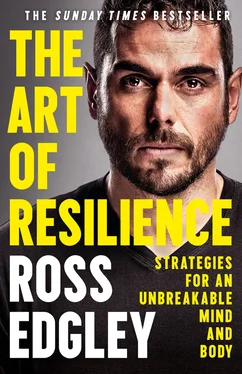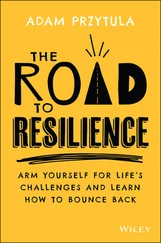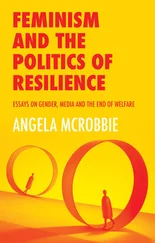I signalled to Matt and Taz that I was ready. Carefully positioning my goggles around my swollen eyes, I set the three-hour countdown timer on my watch and promised myself I wouldn’t stop swimming until I heard the alarm. Neither whirlpool nor fabled water spirits were going to distract me from the task at hand.
Stroke after stroke I battled between the extremes of bravery and common sense. My arms ached and my lungs complained, but I knew this was better than the alternative fate that lay at the bottom of the ocean bed, so for the first 40 minutes I pleaded with my body to keep the impossible pace as we continued our attack on the Corryvreckan. But after an hour or so, the Scottish waters – also known as the mystical washtub of the Hag Goddess – had other ideas and delivered a ‘curve ball’ I never saw coming … a giant jellyfish swimming straight into my face.
There was not just one, but a whole army of them in the water. Known as lion’s mane jellyfish, their tentacles can grow up to 6 ft long and they can weigh up to 25 kg. But while I had been hit in the face by jellyfish tentacles many times before, this particular group was different. That’s because, despite trying to swim through their initial stings, I could still feel a burning sensation across my nose and cheeks.
After two hours, the pain was excruciating … it felt as if someone was pressing a hot poker into my face that was searing into my flesh with such intensity, I could feel the blisters forming with every mile that passed.
After two hours and thirty minutes, the pain became paralysing … I began to feel that I no longer had any control over the left side of my face as the toxins from the jellyfish seeped into my skin in the most painful form of paralysis I’ve ever experienced. No longer the manager of my own mouth, I was dribbling, but thankfully still not drowning.
After two hours and forty-five minutes, the pain became blinding … the paralysis had spread to my eyes and was now causing tears to fill my goggles and impair my vision. Trying to adjust my goggles mid-stroke, I quickly discovered this final jellyfish blow had stung my face so badly that my eye sockets had become inflamed and the seal of the goggles to my face was no longer watertight.
‘Keep swimming!’ Matt shouted from the boat.
With 40 years’ experience of sailing, he knew better than anyone that we were still uncomfortably (and dangerously) close to one of the world’s largest and most deadly whirlpools.
As my vision became increasingly impaired by my own tears and the salt water, I was now semi-blind … in the sea … with no sense of direction … so in desperation I punched the goggles into my face. Somehow (painfully) securing a watertight seal around the rims again, I regained some vision and was able to sprint in whatever direction Matt told me to.
After three hours, the pain became worth it … the alarm on my watch had never sounded so sweet as it signalled I had swum clear of the whirlpool. But with no time to celebrate, my focus immediately shifted to the pain of the jellyfish stings now plaguing my face, neck and arms.
‘I’ve been hit by a jellyfish!’ I shouted to the crew.
Taz rushed over to the side of the boat to assess the situation.
‘My skin’s still burning,’ I said wincing from the pain.
As Matt focused on maintaining a strict course through the perilous waters, Taz looked down at my face and saw immediately what was wrong.
‘Yes, I know,’ he said now visibly wincing too. ‘I can see the tentacle still wrapped around your face.’
Unbelievably, I had been WEARING A JELLYFISH TENTACLE all through the Corryvreckan.
I unpeeled the fat, thick, toxic tentacle that had somehow threaded itself through the goggle strap and around my face, and felt a momentary sense of relief as the bitter Scottish breeze cooled my skin. Now free to continue the swim, I covered three more miles before I was clear of the Corryvreckan’s clutches.
Climbing into the boat I collapsed onto the deck, mentally and physically spent. I now understood that the rules of conventional sport didn’t apply out here. In this wild and untamed corner of Britain, swimming technique was not going to be the limiting factor. Instead, adventures such as this one would be won or lost based on a person’s ability to summon every ounce of physical and mental fortitude they have in their arsenal and overcome chronic, crippling fatigue.
That night I came to realise this was much more than a swim … it was a form of extreme research into the art of resilience.
~
It’s 7.45 a.m. on 13 August 2018 and we’re (still) among the Inner Hebrides of Scotland.
‘Once you go under that bridge everything changes,’ said the fisherman in a thick Scottish accent that made everything he said sound even more ominous.
He was old, maybe north of 70 years old, and had been sailing these waters for more than half a century. You could almost see the wisdom and seafaring expertise etched into every line of his heavily wrinkled and weathered face, and the years spent hauling in the daily catch frozen into his deeply callused and hardened hands.
‘Up until now Scotland has been gentle with you,’ he said.
‘Really?’ I exclaimed.
I pulled down the neckline of my jumper to reveal my battle wounds that consisted of sea ulcers from the wetsuit chafing and jellyfish stings and scars from my time spent in the Corryvreckan with the Hag Goddess.
‘If that’s gentle, do you want to tell me what you’d classify as rough?’ I asked.
‘Oh, lad,’ he said with a concerned smile. ‘You’ve been swimming in the Inner Hebrides between the islands off mainland Scotland. These are close together, sometimes only a mile apart, and so offer some shelter from the wind and waves. If a storm comes in you can easily pull into a harbour for food and supplies and maybe even sample some famous Hebridean hospitality and a local single-malt whisky.’
As he said this he turned towards Kyle of Lochalsh, a place where you could hear the ancient Gaelic language being spoken and sung by folk musicians in the local pub.
‘You won’t find any of that once you swim under the Skye Bridge,’ he warned. ‘Once you pass under there, you’re heading to the Outer Hebrides and beyond. With nowhere to hide or shelter from a storm, it’s over 30 miles wide. You won’t be welcomed with whisky up there. Instead you’ll find 50-knot Arctic storms and 20-ft waves. Jellyfish might be the least of your worries.’
We all stood in silence for a moment and looked at the Skye Bridge. Spanning less than a mile across, it connects the island of Skye with mainland Scotland and the village of Kyle of Lochalsh over water that, prior to 1995, was only crossable by boat. Now it would become a pivotal landmark in the Great British Swim.
I had been on our boat this morning doing a round of interviews with the media along with some local fishermen intrigued about my round Britain adventure. The tide had begun to turn, which signalled the media interviews were over and another swim was about to begin. As the journalists and fishermen left the boat, I sat in silence with Matt as I delicately attempted to put on my cold, clammy wetsuit over my tender and raw wounds. As I did, one lone writer lingered on deck and plucked up the courage to ask three final questions that would become integral to both the swim and this book:
‘Why are you doing this?
‘Why doesn’t your body break?’
‘How does your mind not quit?’
In truth, I was still trying to answer these questions for myself.
Fatigue and pain were deeply entrenched in each and every cell of my body, and as I sat there they were threatening to bring a stop to the swim. In front of the journalist, even though I was still not 100 per cent sure of the answers, I tried my very best to articulate the conclusion I’d come to so far after 74 days at sea.
Читать дальше












